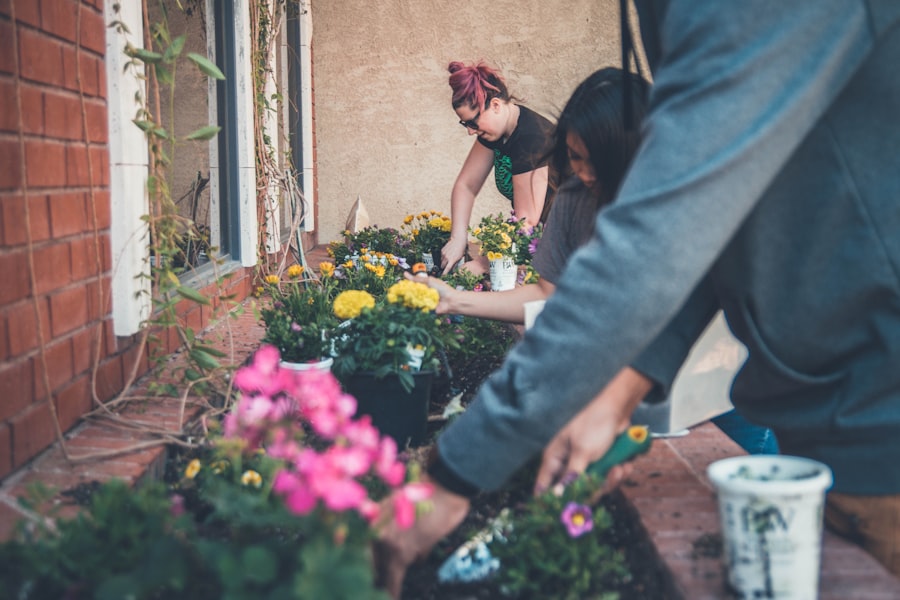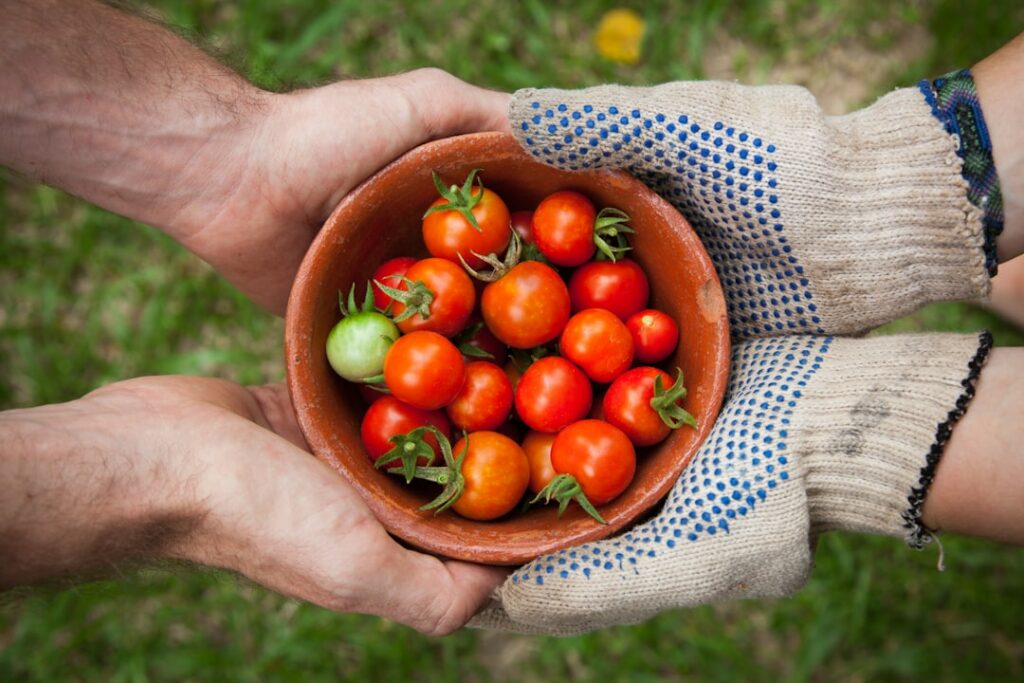Gardening is a popular hobby that allows individuals to connect with nature and create beautiful outdoor spaces. However, it is important to consider the environmental impact of our gardening practices. Eco-friendly gardening practices not only help reduce our carbon footprint but also save money in the long run. In this blog post, we will explore various sustainable gardening techniques that are budget-friendly and easy to implement.
Sustainable Gardening Practices: What They Are and Why They Matter
Sustainable gardening practices are those that promote environmental health and conservation. These practices include using organic fertilizers, conserving water, and reducing waste. By adopting sustainable gardening practices, we can help protect the environment and promote biodiversity.
Using organic fertilizers is an important aspect of sustainable gardening. Chemical fertilizers can have harmful effects on the environment, such as polluting water sources and disrupting ecosystems. Organic fertilizers, on the other hand, are made from natural materials such as compost or manure. They provide essential nutrients to plants without causing harm to the environment.
Conserving water is another crucial aspect of sustainable gardening. Water scarcity is a growing concern in many parts of the world, and it is important to use water efficiently in our gardens. This can be achieved by using techniques such as drip irrigation or collecting rainwater for irrigation purposes.
Reducing waste is also an important part of sustainable gardening. Instead of throwing away yard trimmings or food waste, we can compost them to create nutrient-rich soil for our gardens. This not only reduces waste but also improves soil health and promotes healthy plant growth.
Drought-Resistant Plants: Choosing the Right Ones for Your Garden
Drought-resistant plants are those that can survive with minimal water. These plants are ideal for areas with low rainfall or limited water resources. By choosing drought-resistant plants, we can save water and reduce our water bill.
When selecting drought-resistant plants for your garden, it is important to consider factors such as the climate, soil type, and sun exposure. Native plants are often a good choice as they are adapted to the local conditions and require less water. Some examples of drought-resistant plants include succulents, lavender, and yarrow.
In addition to choosing the right plants, it is also important to provide proper care and maintenance. This includes watering deeply but infrequently, mulching to retain moisture in the soil, and avoiding over-fertilization. By following these practices, you can create a beautiful garden that thrives even in dry conditions.
Green Landscaping Techniques: Creating a Sustainable Landscape
Green landscaping techniques involve using native plants, reducing lawn areas, and creating natural habitats. These techniques can help reduce water usage, promote biodiversity, and reduce maintenance costs.
Using native plants in your landscape is a great way to conserve water and support local ecosystems. Native plants are adapted to the local climate and require less water and maintenance compared to non-native species. They also provide food and shelter for native wildlife, promoting biodiversity in your garden.
Reducing lawn areas is another important aspect of green landscaping. Lawns require a significant amount of water, fertilizer, and maintenance. By replacing some or all of your lawn with native plants or other low-maintenance alternatives such as groundcovers or gravel, you can save water and reduce your environmental impact.
Creating natural habitats in your garden is also beneficial for the environment. This can be done by incorporating features such as bird feeders, bird baths, or butterfly gardens. These habitats provide food, water, and shelter for wildlife, helping to support local ecosystems.
Organic Gardening Tips: Growing a Healthy Garden without Harmful Chemicals
Organic gardening involves using natural fertilizers and pest control methods instead of harmful chemicals. By avoiding these chemicals, we can create a healthy garden that is safe for people and the environment. Organic gardening also helps improve soil health and promote biodiversity.
Instead of using chemical fertilizers, organic gardeners rely on natural alternatives such as compost, manure, or bone meal. These organic fertilizers provide essential nutrients to plants without causing harm to the environment. They also improve soil structure and fertility over time.
When it comes to pest control, organic gardeners use methods such as companion planting, handpicking pests, or using natural predators. Companion planting involves growing certain plants together to repel pests or attract beneficial insects. Handpicking pests can be time-consuming but effective for small infestations. Natural predators such as ladybugs or praying mantises can also be introduced to control pest populations.
By adopting organic gardening practices, we can create a healthy and sustainable garden that supports the overall ecosystem. Organic gardens are not only better for the environment but also produce healthier and more nutritious fruits and vegetables.
Water-Saving Garden Designs: How to Conserve Water in Your Garden

Water-saving garden designs involve using techniques such as drip irrigation, rain gardens, and water-efficient plants. These designs can help reduce water usage and promote healthy plant growth.
Drip irrigation is a water-efficient method of watering plants. It involves delivering water directly to the roots of plants through a network of tubes or pipes with small holes. This ensures that water is delivered where it is needed most and reduces evaporation compared to traditional sprinkler systems.
Rain gardens are another water-saving design feature that can be incorporated into your garden. A rain garden is a shallow depression in the ground that collects rainwater runoff from roofs, driveways, or other surfaces. The collected water is then absorbed by plants or filtered into the ground, reducing the need for additional irrigation.
Choosing water-efficient plants is also important for conserving water in your garden. These plants are adapted to dry conditions and require less water compared to other species. Some examples of water-efficient plants include lavender, rosemary, and sedum.
By implementing water-saving garden designs, you can reduce your water usage and save money on your water bill. These designs also promote healthy plant growth by providing the right amount of water where it is needed most.
Mulching: A Sustainable Gardening Practice for Saving Water and Reducing Weeds
Mulching involves covering the soil with organic materials such as leaves, grass clippings, or wood chips. Mulching can help retain moisture in the soil, reduce weed growth, and improve soil health.
When mulch is applied to the soil surface, it acts as a barrier that helps to retain moisture. This reduces the need for frequent watering and conserves water resources. Mulch also helps to regulate soil temperature, keeping it cooler in hot weather and warmer in cold weather.
In addition to conserving water, mulch also helps to suppress weed growth. By blocking sunlight from reaching weed seeds, mulch prevents them from germinating and competing with your plants for nutrients and water. This reduces the need for herbicides or manual weeding.
Furthermore, mulch breaks down over time and adds organic matter to the soil. This improves soil structure, fertility, and nutrient availability for plants. It also promotes beneficial soil organisms such as earthworms and improves overall soil health.
By using mulch in your garden, you can save water, reduce weed growth, and improve soil health. It is a simple and cost-effective way to create a sustainable garden.
Composting: Turning Food Waste into Nutrient-Rich Soil for Your Garden
Composting involves breaking down organic materials such as food waste and yard trimmings into nutrient-rich soil. Composting can help reduce waste, improve soil health, and promote healthy plant growth.
Instead of throwing away food waste or yard trimmings, composting allows us to turn these materials into valuable resources for our gardens. Composting can be done in a backyard compost bin or a compost pile. The organic materials are broken down by microorganisms such as bacteria and fungi, resulting in nutrient-rich compost.
Compost can be used as a natural fertilizer for your garden. It improves soil structure, increases water retention, and provides essential nutrients to plants. Compost also helps to suppress diseases and pests, reducing the need for chemical pesticides.
By composting, we can reduce waste going to landfills and reduce greenhouse gas emissions. When organic materials decompose in landfills, they produce methane, a potent greenhouse gas. Composting also helps to conserve water by improving soil structure and water retention.
Rainwater Harvesting: Collecting Rainwater for Your Garden and Saving Money on Water Bills
Rainwater harvesting involves collecting rainwater from rooftops or other surfaces and storing it for later use. Rainwater harvesting can help reduce water usage and save money on your water bill.
There are several methods of rainwater harvesting, including using rain barrels or cisterns to collect and store rainwater. The collected rainwater can then be used for irrigation purposes, reducing the need for municipal water.
Rainwater is free from chemicals such as chlorine or fluoride that are often found in tap water. It is also naturally soft and does not contain minerals that can build up in the soil over time. This makes it an ideal source of water for your garden.
By collecting rainwater, you can reduce your reliance on municipal water sources and save money on your water bill. It is a sustainable and cost-effective way to provide water for your garden, especially during dry periods.
Creating an Eco-Friendly Garden on a Budget is Easy and Rewarding
By adopting sustainable gardening practices, we can create a beautiful and eco-friendly garden that is both rewarding and budget-friendly. Whether you choose to use drought-resistant plants, green landscaping techniques, or composting, there are many ways to create a sustainable garden.
Taking small steps towards sustainability can have a big impact on the environment. By conserving water, reducing waste, and avoiding harmful chemicals, we can help protect the environment and promote biodiversity in our own backyards.
Creating an eco-friendly garden is not only beneficial for the environment but also for our own well-being. Spending time in nature and connecting with the earth has been shown to reduce stress, improve mental health, and increase physical activity.
So why not start today? By implementing some of the sustainable gardening practices mentioned in this blog post, you can create a garden that is not only beautiful but also environmentally friendly. Let’s work together to create a greener and more sustainable future.
If you’re looking to create an eco-friendly garden on a budget, you may also be interested in learning how to keep weeds out of rock landscaping. This informative article from House Hack Tips provides helpful tips and tricks for maintaining a weed-free rock garden. By implementing these strategies, you can enjoy a low-maintenance and environmentally friendly outdoor space. Check out the article here for more details.

